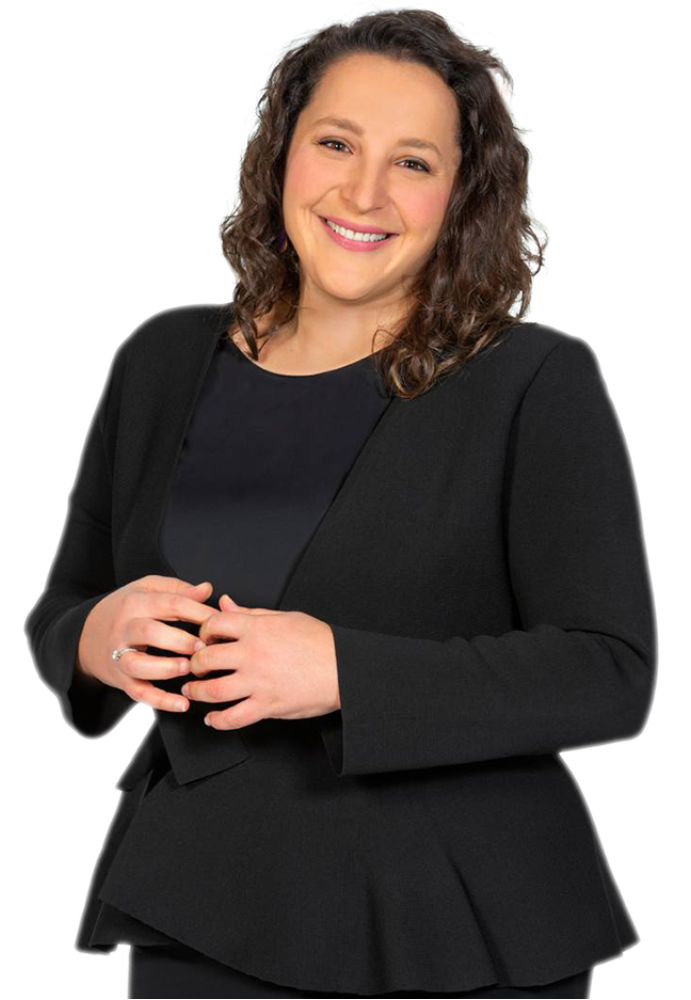Bed Bath ‘N’ Table Pty Ltd (BBNT) and their competitor “House” have co-existed for over three decades, each building a substantial reputation in the homeware retail space.
However, the relationship between the two retailers reached a turning point in May 2021 when Global Retail Brands Australia Pty Ltd (GRBA) launched a new soft homewares sub-brand using the below logo (House B&B Mark):

The proceedings
BBNT commenced proceedings in the Federal Court of Australia alleging GRBA had infringed BBNT’s various ‘BED BATH ‘N’ TABLE’ trade marks, engaged in misleading and deceptive conduct and made false and misleading representations in contravention of the Australian Consumer Law (ACL), and engaged in the tort of passing off.
GRBA denied the allegations, contending, amongst other things, that the use of the words ‘BED’ and ‘BATH’ were merely descriptive and used to describe categories of soft homewares.
Reputation
Both BBNT and GRBA accepted that the other has a substantial and independent reputation in their respective marks: ‘BED BATH N’ TABLE’ and ‘House’.
Since 1976, BBNT has sold soft homewares. BBNT claims to have a unique store presentation that conveys an upmarket feel through its white walls, wooden floors and large glass windows with no discount signage. Each store includes prominent display signage with ’BED BATH N’ TABLE’.
BBNT has been the only retailer in Australia to use the words ‘BED’ and ‘BATH’ in its name for over 40 years. BBNT’s branding is carefully managed through regimented brand guidelines, and its branding has consistently been as follows:

Meanwhile, since 1978, GBRA and its predecessors have operated retail stores in Australia under the ‘House’ brand. In May 2021, the ‘House’ brand was well-established in the hard homeware market, with approximately 100 physical ’House’ branded stores open throughout Australia.
In comparison to BBNT, ‘House’ stores typically feature discount marketing with crowded displays and discount signage. The signs are a prominent feature, often covering most of the shopfront windows, and are hung as bunting across the tops of store doorways.
Adoption of the House B&B Mark
The Court heard that around June 2020, GBRA acquired the “MyHouse” business, which sold soft homewares and initially planned to open 50 ‘MyHouse’ branded stores. However, at the “very last minute” (only days before the first ‘MyHouse’ store was scheduled to open), it was decided to use the House B&B Mark to identify these new soft homewares stores. While emails outlining potential names stated that they would “have Bed bath and table running scared”, the key decision makers from GRBA contended that the proposed name was not derived from BBNT. Rather, the words “BED” and “BATH” are common descriptors of all soft furnishings.
Ultimately, without seeking legal advice, the name ‘House BED & BATH’ was selected out of other possible names, including ‘HOUSE BATH AND BED’ and ‘HOUSE BEDWORKS’, and the House B&B Mark was created.
GRBA applied for the registration of the House B&B Mark on 12 May 2021, which has since been opposed by BBNT.
On 14 May 2021, GRBA launched its first soft homewares store using the House B&B Mark. Shortly after the opening of this store, BBNT raised the prospect of confusion with GRBA. GRBA was determined not to change the name, relying on the position that the sub-brand was a “clear brand extension” of the iconic ‘House’ brand and the words ‘BED’ and ‘BATH’ were used as category descriptors.
Findings
The Court’s observation of three of GRBA’s key witnesses was damning.
In one instance, a witness conceded that a statement in his affidavit that he had not visited a BBNT store as part of his research was false. In a “jury style” reveal, the witness was taken to one of his photographs, which showed him reflected in a mirror, taking a photo while standing inside a BBNT store. In another instance, the Court held that one of GRBA’s witnesses was “unimpressive” and “gave some frankly unbelievable answers”.
The Court observed that the witnesses’ common catchphrase during evidence that “the words bed and bath are common descriptors in the category of all soft furnishings” came across as “contrived and an attempt to reverse engineer the thought process behind selecting the House B&B Mark”.
In these circumstances, the Court held that GRBA’s witnesses’ “refusals to acknowledge, or even conceive, that there was any prospect of consumers being confused by the House B&B Mark and BBNT was untenable.” Nevertheless, the Court held that the evidence fell short of demonstrating a commercially dishonest intention on the part of GRBA to appropriate part of BBNT’s trade or reputation. Rather, the Court categorised GRBA’s conduct as more in the nature of wilful blindness to any potential confusion. This factor was relevant in the ACL claim but not as to whether the two marks were deceptively similar.
Trade mark claim
Ultimately, BBNT failed in its trade mark infringement claim. Justice Rofe concluded that, on a comparison of the marks, not taking account of reputation, the House B&B Mark was not substantially identical or deceptively similar to BBNT’s ‘BED BATH ‘N’ TABLE’ registrations.
The Court held that an ordinary consumer is not to be credited with any knowledge of the actual use of the registered trade mark or any reputation associated with that mark. Thus, any reputation that BBNT had in its BBNT mark was put to one side, together with any factual distinctiveness that may have accumulated with respect to the mark over the four decades of use. It is the BBNT mark as registered, which is subject to the test of imperfect recollection.
Importantly, Justice Rofe determined that the House B&B Mark was one composite mark, meaning ‘BED & BATH’ was not operating as a separate trade mark.
An analysis of BBNT’s registered trade marks found the ‘N’ Table’ to be a key feature of these marks. BBNT, therefore, did not establish that it had the use of ‘BED and BATH’ alone (that is, without the word ‘TABLE’).
Therefore, the comparison was not between ‘BED & BATH’, as a separate trade mark - as argued by BBNT - and ‘BED BATH ‘N’ TABLE’. Rather, it was a comparison between ‘BED BATH ‘N’ TABLE’ and the House B&B Mark as a whole.
While Justice Rofe did consider that the House B&B Mark contained the same words ‘BED’ and ‘BATH’ and used a similar font for those words, the presence of ‘House’ was considered the more dominant visual cue. Justice Rofe ultimately concluded that the marks had sufficient differentiation to conclude that there was no trade mark infringement.
ACL claim
Although the reputation associated with a trade mark is not relevant to determining trade mark infringement, it is a relevant factor (albeit not a mandatory factor) under the ACL.
BBNT alleged that by adopting the House B&B Mark, GRBA engaged in misleading and deceptive conduct and made false and misleading representations that stores displaying the House B&B Mark were somehow associated or affiliated with BBNT.
The Court considered BBNT’s extensive reputation, accumulated for over 40 years in the soft homewares market, as well as the appearance and style of BBNT’s stores and the fact that no other retailers had used the words ‘BED’ and ‘BATH’ in their store name. The Court found that despite the use of somewhat descriptive words, ‘BED’, ‘BATH’ and ‘TABLE’, ‘BED BATH N’ TABLE’ had become factually distinctive.
GRBA’s adoption of a name that appropriated two of these words in the same order from one of its largest competitors and the similarities in the way they presented their stores (as compared to the original cluttered and discounted look of ‘House’ stores) were seen as potentially leading consumers to an association between the two brands. The Court considered that a reasonable consumer would not recognise it as a ‘House’ store of the kind they are used to seeing and may wonder if there is some association with BBNT. While the prominence of ‘House’ in the House B&B Mark was highly relevant, it was not considered sufficient to dispel this confusion.
The Court held that GRBA had breached the ACL by engaging in misleading and deceptive conduct and making false and misleading representations that the stores displaying the House B&B Mark were associated or affiliated with BBNT.
Passing off claim
The tort of passing off protects a right of property in business, goodwill or reputation.
The elements of the tort of passing off are well established and comprise three core concepts: reputation, misrepresentation, and damage.[1]
It was clear and undisputed that BBNT had an established reputation in ‘BED BATH N’ TABLE’. Given the findings in relation to the ACL claim, it was determined that GRBA misrepresented an association between GRBA and BBNT. That deception may have, on occasion, led a consumer to purchase products from a store displaying the House B&B Mark in the mistaken belief that it was a BBNT or a BBNT-related store. Since all three elements were made out, GRBA’s conduct amounted to passing off.
Takeaways
This case reiterates, following Self Care IP Holdings Pty Ltd v Allergen Australia Pty Ltd[2] and McD Asia Pacific LLC v Hungry Jack’s Pty Ltd,[3] that reputation is not to be considered in undertaking an assessment of substantially identicality or deceptive similarity in a claim for trade mark infringement. Reliance on the similarity of the marks being used with the registered mark is the paramount consideration. This is important for businesses that may not yet have a reputation in their brand because, if they have a registered trade mark, a substantially identical or deceptively similar later used mark will infringe regardless of the other trader’s reputation.
Reputation in a registered trade mark may be considered when opposing a trade mark application.[4] As noted, BBNT is opposing GRBA’s trade mark application. During this process, BBNT will be able to rely on its reputation.
In comparison, reputation is an important and required component to establish passing off. It is also a highly relevant factor in assessing whether conduct is misleading or deceptive or a false and misleading representation of association or affiliation in breach of the ACL.
A further point of interest in this case is the finding that ‘BED & BATH’ was not purely descriptive. Since the products being sold under the trade marks were soft homewares and not beds and baths per se, these words were found to be “more allusive than directly descriptive”. This not only assisted Justice Rofe in concluding there was trade mark use of the House B&B Mark but also led to the finding that ‘BED & BATH’ should not be discounted as being descriptive in assessing the deceptive similarity of the trade marks. Although this did not ultimately result in a finding that the marks were deceptively similar, it is an important distinction to note.
The case between BBNT and GRBA is not closed. As mentioned, BBNT is opposing GRBA’s Headstart application, and GRBA has appealed the Honourable Justice Rofe’s decision. We anticipate this to be heard in August 2024 and will examine the case further once a judgement has been given.
State Street Global Advisors Trust Co v Maurice Blackburn Pty Ltd (No 2) (2021) 164 IPR 420
(2023) 171 IPR 20
[2023] FCA 1412
Section 60 of the Trade Marks Act


